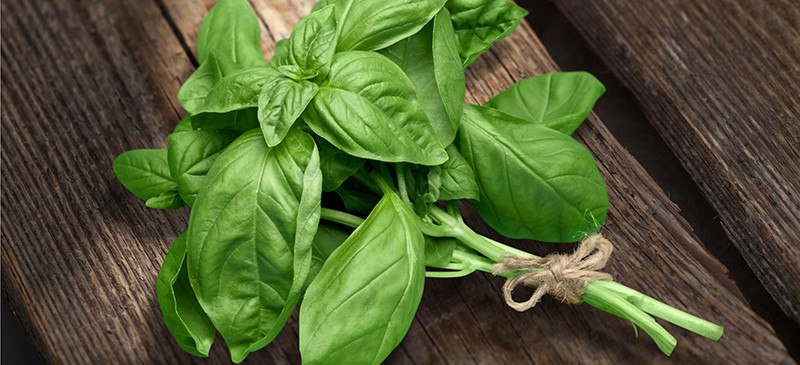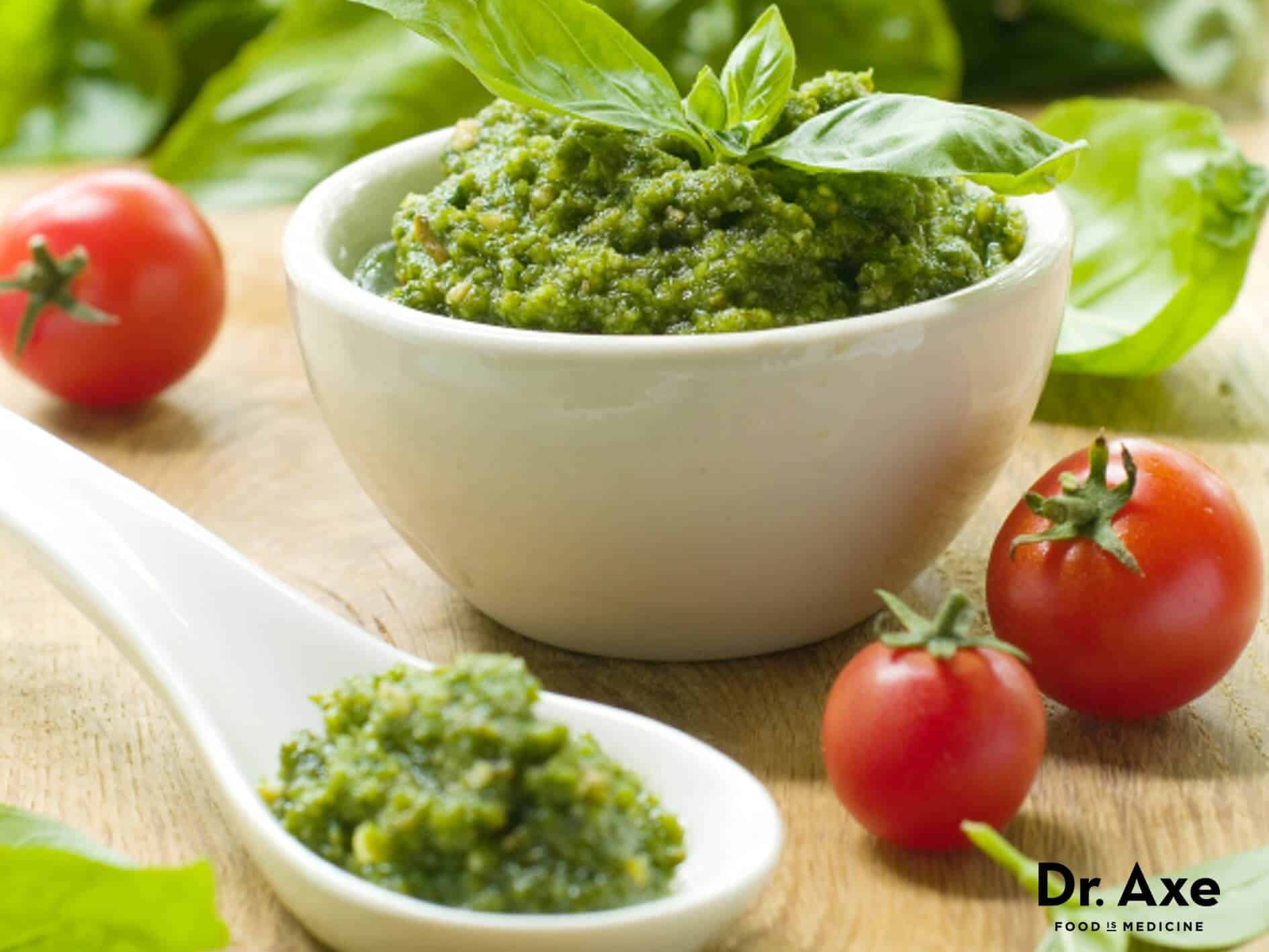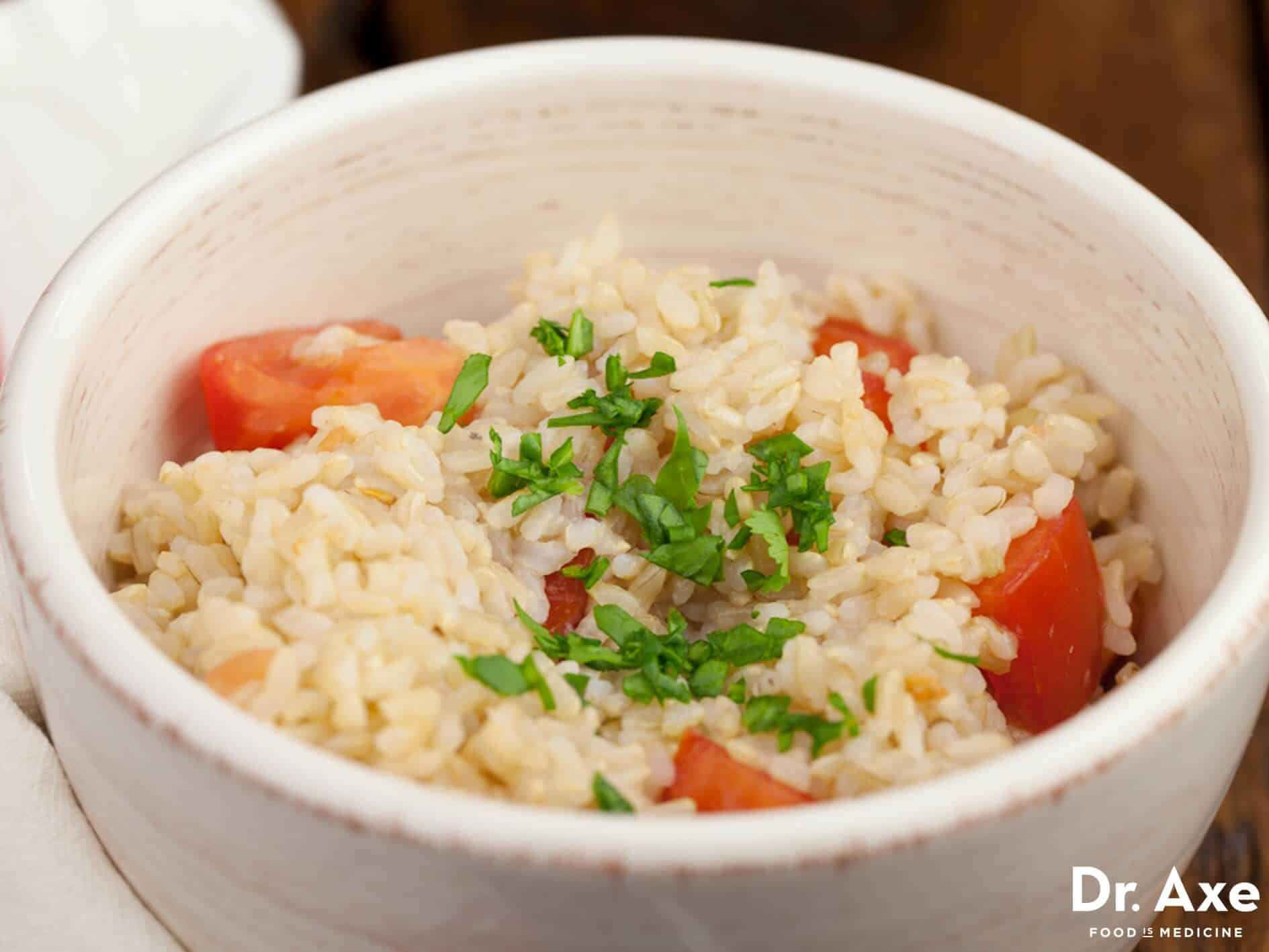For those of you born and raised in the Tropical rural areas, attended school in the hinterlands, lived near herbal centers/shrines/ spiritual churches, have done research or attended Tertiary Institutions to undertake formal studies, the above name leaves is called BASIL.
It's local Akan name is AKOKOMESA or AKOKOBESA. The etymological origin would be dealt with when we meet the elders.
In Ghana Herbal Lore, Akokomesa is one of the important plant with medicinal values.
Now, here is an interesting story, we had visited Las Vegas and was in one of the numerous African markets there. We were researching herbal medicine sales in the City for migrant Africans in the City. Luckily we met an Akan lady who introduced us to Prekese, Hwentsea, Soro Wusa, Bitter Leaves and many more. She then took some Nigerian leaf supposedly to be AKOKOMESA. I think the name on it was OHA. When we got to our hotel we researched it and It's Botanical name is Pterocarpus mildraedil. Meaning it was not what she thought it was. Wrong name given to wrong leaf, well just be careful when you visit people to do your research or to buy stuff for self medication ( Our alert)
12 Benefits of Basil + Recipe Ideas
December 6, 2017

Basil is a common aromatic herb in the mint family, the same plant family as other nutrient-dense, beneficial herbs, including mint, oregano and rosemary. Basil, of course, is used to add flavor to a variety of recipes, but what may surprise you is the many benefits of basil that make it well-known for its immunity-enhancing properties. Basil extract, or basil essential oil, is proven to help prevent a wide range of health conditions, which makes it one of the most important medical herbs known today.
Did you know there are actually 35 different types of basil? Basil plants come in a range of variety and sizes, but holy basil is the most researched type of basil thus far. Holy basil is the species of basil most known for its powerful healing qualities. To date, at least six different essential oils have been identified in holy basil within its seeds, roots, leaves and stem. Holy basil, which has the scientific name Ocimum sanctum L. or Ocimum tenuiflorum L., is known to be an anti-inflammatory, anti-bacterial and powerful adaptogen — meaning it helps the body to respond to stress and fight disease.
Basil is an important medicinal plant in various traditional and folk systems of medicines, such as those in Southeast Asia and India. Holy basil is usually referred to as tulsi in India and is actually considered a sacred herb. It’s been used in over 300 different Ayurvedic herbal treatments for thousands of years, including tinctures, teas, ointments and tonics. Tulsi is also an important symbol in many other Hindu religious traditions and is linked to the goddess figure; in fact, tulsi in Sanskrit means “the incomparable one.” (1)
What Are the Proven Benefits of Basil?
Scientific studies show the following benefits of basil: (2)
- Anti-inflammatory
- Antioxidant
- Cancer-fighter
- Pain-reducer (analgesic)
- Fever-reducer (antipyretic)
- Diabetes-preventer
- Liver-protector (hepatoprotective)
- Blood vessel-protector
- Anti-stress solution
- Immune-booster
Basil contains antioxidant-rich volatile essential oils, which are considered hydrophobic. This means they don’t dissolve in water and are light and small enough to travel through the air and the pores within our skin. Basil’s volatile essential oils are what give the herb its distinct smell and taste, but they’re also responsible for the healing benefits of basil.
Herbs like basil contain essential oil compounds because these help the plant defend itself from predators like bugs, rodents and strains of bacteria in the soil. When we ingest these protective oils, we experience similar benefits: a boost in immunity and protection from disease.
The most common cooking basil used as a fresh herb in recipes is Italian basil, which also boasts numerous health benefits because of it’s high levels of antioxidants, magnesium and vitamins. Basil extract is also used to create perfumes, household cleaners and in dental-care products since one of the known benefits of basil is its ability to act as an anti-bacterial and anti-microbial agent that fights germs and bacteria.
½ cup of fresh chopped basil (or about eight tablespoons) has roughly: (3)
- 2 calories
- 0 fat, protein, sugar or fiber
- 56 milligrams vitamin A (24 percent)
- 88 milligrams vitamin K (108 percent)
- 0.24 milligrams manganese (12 percent)
- 4 milligrams vitamin C (8 percent)
12 Health Benefits of Basil
1. Contains Disease-Fighting Antioxidants
One of the key benefits of basil essential oil is the ability to help fight free radical damage while protecting DNA structure and cells. Basil contains two important water-soluble flavonoid antioxidants, known as orientin and viceninare, which help protect white blood cells responsible for immune function, as well as cellular structures where DNA is stored.
Antioxidants found in basil keep chromosomes from becoming altered and resulting in cell mutations and cancerous cell growth. Oxidative stress occurs inside the body due to the effects of toxins in the diet, environmental pollution and radiation — but antioxidants like the kind found in basil help fight oxidation and slow down the effects of aging.
2. Acts as an Anti-Inflammatory
Basil contains powerful essential oils, including eugenol, citronellol and linalool. These are enzyme-inhibiting oils that help lower inflammation, which is at the root of most diseases like heart disease, rheumatoid arthritis and inflammatory bowel conditions.
3. Fights Cancer
Clinical studies published in Nutrition and Cancer also show that basil contains phytochemicals, which can help naturally prevent cancer, including chemical-induced skin, liver, oral and lung cancers. Basil is able to increase antioxidant activity, positively alter gene expressions, induce cancerous-cell apoptosis (death of harmful cells) and stop cancerous tumors from spreading. (4)
In studies using animals, basil extract has shown protection against cancer and mortality while also selectively protecting normal tissue and cells from negative effects of cancer treatments like radiation or chemotherapy. This means that using basil extract can be beneficial as a supplemental cancer treatment even when someone is already undergoing traditional forms of treatments.
4. Contains Antibacterial Properties
Another one of the benefits of basil essential oils is to provide protection against harmful bacterial growth. In studies, basil extract is even shown to be helpful in inhibiting resistant strains of bacteria that don’t respond to antibiotic treatments.
When researchers from the Medical University of Lodz in Poland tested the antibacterial activity of basil oil against strains of E. coli and other powerful bacteria that were gathered from sick patients with infections, the results showed that basil was effective in acting against the bacteria strains and helping to inhibit their growth. (5) This has led researchers to continue to study how basil and other antibacterial oils may help fight antibiotic resistant illnesses and infections.
5. Contains Antimicrobial Properties that Fight Viruses and Infections
Basil essential oils have been found to exhibit anti-microbial activity against a wide range of bacteria, yeasts, molds and viruses. This means you can add protection against the candida virus and various forms of skin irritations to the long list of proven benefits of basil.
6. Combats Stress by Acting as an ‘Adaptogen’
Studies show that basil has strong potential to act as a natural adaptogen, an herbal medicine that helps the body adapt to stress and to normalize the harmful effects of stressors on bodily processes.
For example, when researchers studied the anti-stress effects of fresh basil leaves given to rabbits that were exposed to a high-stress environment, they found a significant improvement in oxidative stress levels following basil use. After the rabbits received supplementation of two grams of fresh basil leaves for 30 days, they experienced cardiovascular and respiratory protection in response to stressors. A significant decrease in blood sugar levels was also observed, while a significant increase in antioxidant activity was observed. (6)
7. Fights Depression
Benefits of basil also apply to those with mental disorders or mood-related illnesses, including depression and anxiety. Basil is also considered an antidepressant by some since it can positively impact brain function within the adrenal cortex, helping stimulate neurotransmitters that regulate the hormones responsible for making us happy and energetic.
8. Promotes Cardiovascular Health
Both an antioxidant and anti-inflammatory food, basil can help the muscles that control blood vessel function to contract and relax, promoting healthy blood pressure. Benefits of basil include the ability to help prevent dangerous platelet aggregation, clumping together of blood platelets that can form a clot within the arteries and cause cardiac arrest.
Basil extracts also reduce inflammation that can cause cardiovascular disease by inhibiting the release of pro-inflammatory cytokines, proteins that are secreted from cell to cell in order to communicate and raise the body’s immune defenses.
When this happens for prolonged periods of time, the body experiences an “inflammatory cascade,” which puts stress on the organs and slows down blood circulation, hormone regulation and cognitive processes. When it comes to heart health, inflammation can build up fatty, cholesterol-rich plaque in blood vessels and raise the risk for a heart attack or stroke.
9. Supports Liver Function and Helps Detoxify the Body
A study published in the Journal of Medicinal Food found that when sickly rats were given basil extract over a period of five days, they experienced significant improvements in producing detoxifying enzymes, higher antioxidant defenses and a reduction of fat buildup in the liver that can cause liver disease. (7)
10. Helps Alkalize the Body and Improve Digestion
Basil helps balance acid within the body and restore the body’s proper pH level. This can improve digestion and immunity by helping healthy bacteria flourish within the gut microflora, while also decreasing harmful bacteria that can cause disease.
Other benefits of basil when it comes to improved digestion? Traditionally, basil has also been used to help reduce bloating and water retention, loss of appetite, stomach cramps, acid reflux, and even to kill stomach worms or parasites.
11. Can Act as a Natural Aphrodisiac
In Italy, basil has been considered a symbol of love for centuries. The aroma of basil is believed to increase libido and arousal, possibly by increasing blood flow and energy levels, while reducing inflammation. In the Hindu religion and in Ayurveda practices, holy basil (tulsi) is considered the “elixir of life” and is used to promote healthy sexual function and an upbeat mood. (8)
12. Helps Protect from Diabetes and Metabolic Syndrome
Basil extracts have been found to reduce circulating blood glucose levels and inflammation, which makes basil protective against diabetes development and other forms of metabolic syndrome. Additionally, benefits of basil essential oils include the ability to help lower triglyceride and cholesterol levels, which diabetic patients are at a higher risk for developing.
When researchers from the Department of Home Science at Azad University of Agriculture and Technology in India investigated the effects of holy basil leaves on blood glucose and serum cholesterol levels in humans through double-blind clinical trials, the results showed that basil caused significant improvements in blood glucose control and mild improvements in cholesterol levels. This suggests that basil supplementation can be a useful and safe way to help control diabetes and complications that result from the disease. (9)
Types of Basil
There are actually some significant botanical differences between various types of basil plants, so when someone refers to generic “basil,” it’s hard to know exactly the type that person is speaking of and what the benefits of that species may be.
All basil plants for the most part grow as small plants that produce large green leaves, measuring around two inches in length. Their season is through the warm summer months when they can often be found at farmers’ markets across the U.S.
Some of the many species of basil include: sweet basil, lemon basil, Italian or curly basil, holy basil, thai basil and lettuce-leaf basil. The flavor and smell of basil varieties vary depending on their unique chemical components and the amount of essential oils they contain. The following oils are common across all basil types but are found in varying quantities: cinnamate, citronellol, geraniol, linalool, pinene and terpineol. (10)
Historical Uses of Basil
Basil belongs to the genus Ocimum, which is derived from the Greek ozo, meaning “to smell.” The exact origins of basil are somewhat unclear, however it’s believed that basil is native to areas in Asia and Africa. Basil plants began growing as wild perennials on some pacific Islands thousands of years ago and then were brought from India to Europe through the Middle East in the 16th century. Sometime during the 17th century basil made its way over to the Americas.
In historical European culture, basil has been tied to superstition and the scorpion. Many years ago, it was advised to handle basil gently as to “avoid the breeding of scorpions.” Scorpions were believed to seek out basil pots to rest under, and old superstitions said that a basil plant left for too long would eventually turn into a scorpion!
Holy basil also has a long history of religious and medical use in India, where it’s considered one of the most important herbs there is. Holy basil is a sacred herb in the Hindu religion and believed to be protective and healing. Tulsi, “the Queen of Herbs,” is considered legendary, cherished, womanly — and its essential oils are considered powerful at remedying headaches, low energy, stress, disease and sexual dysfunction.
Buying and Cooking with Basil
Today, basil is one of the most important herbs in many cultures and cuisines, including Italian, Indian, Thai and Vietnamese. Basil can be used in a ton of ways: with sautéed vegetables; in sauces; to flavor meat, fish and stews; as part of dressings; in herbal teas; to flavor liqueurs; and even to make mixed drinks.
Some of the most common uses for basil in recipes include making pesto sauce; marinara tomato sauce; or combining it with flavors from olive oil, garlic, cheese, vinegars and nuts. Fresh basil, dried basil and oil-infused basil are all ways to add basil flavor to dishes and experience the benefits of basil.
When buying basil, look for brightly colored leaves that are firm and aren’t wilted. Basil is usually available at farmers’ markets during the summer and early fall, and year-round at most grocery stores. You can also try growing your own basil plants by planting some in any warm space that has a lot of access to sunlight. Store dried, unwashed basil in the refrigerator once you buy it or pick it, wrapped inside a damp paper towel and placed inside of a plastic or paper bag to prolong its freshness. Wash it before using it since basil can carry dirt and feel “gritty.”
Basil Recipes
Tomato Basil Juice Recipe
Total Time: 5 minutes
Serves: 2
INGREDIENTS:
- 2 tomatoes
- 1/2 cucumber
- 1 cup fresh basil
- Pinch of sea salt
DIRECTIONS:
- Add all ingredients to vegetable juicer. Gently stir juice and consume immediately.

Basil Tomato Pesto Recipe
Total Time: 5 minutes
Serves: 4
INGREDIENTS:
- 1 (8-ounce) jar sun-dried tomatoes
- 2 cups loosely packed fresh basil
- 2 cloves garlic
- 1/4 cup pine nuts
- 1/4 cup olive oil
- 1/4 cup grated raw cheese
DIRECTIONS:
- Place all ingredients in a blender and blend until creamy.

Brown Rice, Tomatoes and Basil Recipe
Total Time: 45 minutes
Serves: 4
INGREDIENTS:
- 1 cup brown rice
- 2 teaspoons sea salt
- ¼ cup coconut vinegar
- 2 teaspoons raw honey
- 1 tablespoon coconut oil
- Black pepper to taste
- 1 pound heirloom tomatoes
- 1 cup basil leaves, chopped
DIRECTIONS:
- Bring two cups of water to a boil and add the rice and salt. Return it to a boil and simmer for 30–40 minutes until rice is cooked and the water is evaporated.
- Whisk together the vinegar, honey, coconut oil, salt and pepper. Pour over the rice. Add the tomatoes and basil. Mix and serve.

Side Effects of Basil
Basil essential oil isn’t meant to be ingested and should be diluted when used on the skin due to its potency. Basil in fresh form is considered very safe and is usually well-tolerated since it doesn’t commonly cause allergic reactions or side effects in most people. But there are some risks for certain groups of people.
If you’re pregnant, trying to get pregnant or breast-feeding, it’s a good idea to avoid basil since traditionally it’s been known to have anti-fertility effects. Basil essential oils or supplements might also interact with cholesterol-lowering medications and diabetic medications, so if you’re currently taking prescriptions for these conditions, you’ll want to speak with a doctor before taking basil supplements.
Read Next: What Is Arugula Beneficial For?
link:


ReplyDeleteThis article are supper help full if you want to now more about Parasite Cleanse then please click here: